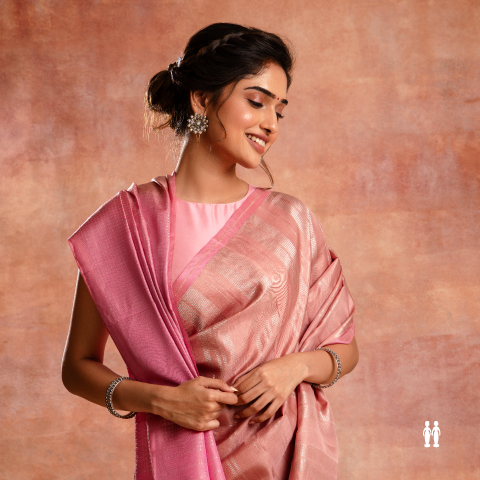The dynamic and diverse landscape of a region is inscribed onto its weave through motifs, which also have a deeper symbolic meaning attached to it. In this week's edition of The Great Indian Fabric blog, we will be immersing ourselves into the art and science of Pulli Kolams, a centuries-old craft that is central to a multitude of cultural customs.
Known through a host of names across the country, ranging from rangoli in Karnataka, Mugguin Andhra Pradesh, Sathaya in Gujarat,Madna in Rajasthan, Chowkpurna in Uttar Pradesh, Pookalam in Kerala, Aripan/Alpana in West Bengal and Chita in Odisha, Kolams are a part and parcel of everyday life in India. Each dot, line, curve, interlinking circle, triangle and square is said to represent the universe's energy and is backed by a heritage extending to over six centuries.

Patterns from the past
Kolam translates to "form" and "beauty" in Tamil and is revered as a symbol of auspiciousness and divinity. The origin of this beautiful art form can be traced back to the Sangam Literature from 300 BCE, where it was mentioned in various places. One of the first references was in the 9th century where Andal, one of the 12 Alvars, speaks a great deal about Kolams in the Nachiar Tirumozhi (sacred sayings of the Goddess). Another important link is the Shaivite hymns, written by Manickavasagar, where the use of ‘Ma Kolam’ during Krishna Jayanthi is mentioned. Albeit the most notable one would be the Kalingattuparani, a 12th-century Tamil war song by Jayamkondar that talks about Kolams in addition to marking the victory of Kulottunga Chola I over the King of Kalinga. Fast-forwarding to 1899, the literary work Kolaputhagam, gives valuable insight about 'panchavarnam' or the 5 main colours to be used in a kolam - white, black, red, yellow and green.
Classification and connections
Kolams can be broadly be classified into four types according to renowned architect Thirupurasundari Sevvel. The first type is spatial where patterns are different based on the part of the house they are drawn on. The second is by family, where each one has a unique set of motifs that are handed down through generations. The third classification is by the region wherein terms of design the Chettinad style portrays family homes and members in neat rows whereas other regions are known to emphasize everyday objects of significance like spices and jewellery. The fourth and final one is by tradition, wherein the intricacy of the patterns is determined by the occasion. For example, wedding kolams are far more social and is a community activity where 7-8 women draw it together.
Let us take a look at some of the most prominent kolam variations.
1. Chikku/Sikku Kolam: Curved lines around the dot2. Pulli Kolam: Dots filled into a grid or matrix
3. Woda Pulli Kolam - Loops with hexagonally packed dots
4. Ner Pulli Kolam - Loops with square-packed dots
5. Kambi Kolam - Intricate pattern made with lines

With an array of varying designs ranging from simple to complex, an interesting attribute about the Kolam is the foundation of mathematics and science upon which it is built. Comprising a design of dotted grids, Kolams are structured around the Fibonacci series, algebraic principles and geometric concepts of symmetry, periodicity, recursion and rhythm.
Before the day dawns, millions of women across India partake in the ritual of drawing Kolams outside their houses, in order to honour, invite, welcome, and express gratitude to the gods and goddesses. This significant practice is as diverse as our nation and garners appreciation when seen from the wider perspective. Over a period of time, this beautiful art found a connection with the craft of weaving, where artisans were greatly inspired by the complexity of the designs, that they incorporated it as motifs onto weaves. Apart from being a handloom masterpiece, these drapes also became a favourite amongst women, for it meant they would have an auspicious charm close to them, every time they draped the saree. Mirroring the beauty of kolams from floors to fabrics, we at Sundari Silks take great pride in preserving our heritage motifs and bringing them to you through our exclusive collections.






